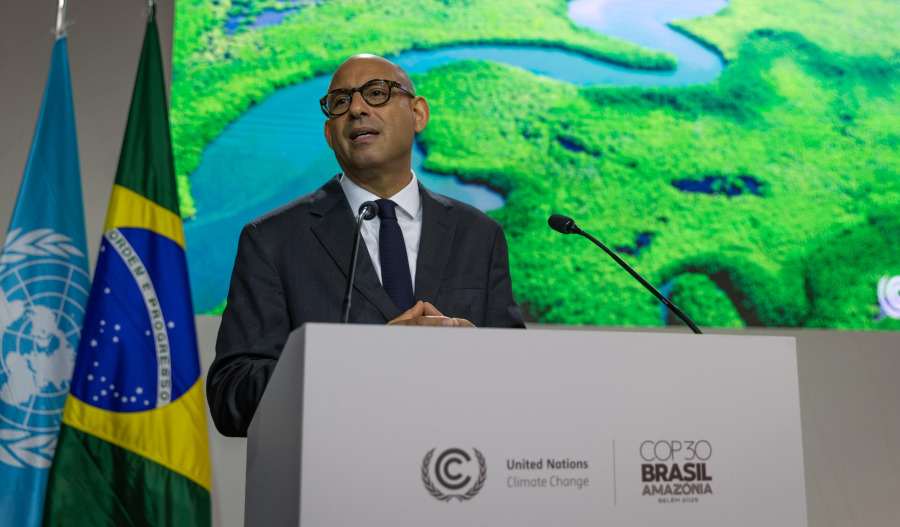With Brazil currently playing host to the 12-day United Nations Climate Change event (COP30) at Belém, capital of the state of Pará, the very least it could expect from fellow BRICS+ members – since assuming presidency of the alliance in July – is some sort of united front on balancing climate and economic priorities.
However, nothing could be further from the truth, with the expanded BRICS bloc displaying a wildly divergent range of interests, ranging from oil dynasties to coal-dependent economies to rainforest guardians.
BRICS lacks alignment
While close to 200 countries gathered at the COP30 summit on Monday, notably absent were founding BRICS members, India and China, which suggests a growing lack of alignment within the renegade trading bloc that was initially established to take on the world and win.
Making Brazil even more unpopular with its BRICS counterparts was the criticism President Luiz Inácio Lula da Silva dished out to fellow members during the recent Rio BRICS Summit for not fulfilling their COP commitments.
“I believe you can—and must—show the world that it is possible to create a new financing model,” Lula said at the recent event in Rio.
“The so-called austerity demanded by financial institutions has left countries poorer.”
Lula was referring to strict fiscal austerity measures that many developing countries were required to adopt in the 1980s to receive loans or debt relief, which have, in many cases, backfired.
The Brazilian president reminded BRICS members that 80% of global emissions originate from the 60 wealthiest countries, a burden largely borne by emerging economies.
The three largest global outliers in the climate change stakes are arguably the three other original founding members of BRICS [beyond Brazil], China, India and Russia.
BRICS is broad and disparate church
Since adding South Africa, the bloc – now referred to as BRICS+ has progressively expanded to include a veritable potpourri of authoritarian governments, dictatorships and democracies.
While more recent BRICS+ members include the United Arab Emirates (UAE), Saudi Arabia, Egypt, Ethiopia, Indonesia, Iran, partner countries also include Belarus, Bolivia, Cuba, Kazakhstan, Malaysia, Thailand, Uganda, and Uzbekistan.
Given the diverse composition of nations inside BRICS+, it’s hardly surprising that climate strategy is one of many issues that member countries cannot find agreement on.
For example, South Africa and India rely on coal for most of their electricity, while Russia’s economy depends on oil and gas exports, with little incentive to transition.
Then there are countries like the UAE, which, while promoting its green investments, including solar, continues to produce hydrocarbons and Saudi Arabia, which is investing billions in hydrogen while simultaneously remaining heavily reliant on fossil fuels.
Lip service
Given the bipolar nature of climate change thinking displayed by BRICS+ members, Brazil’s climate diplomacy risks being seen as a platform that only pays lip service to the Global South – aka economically disadvantaged or developing countries - that not even its closest and largest allies support.
With finance and trade clearly among the few areas where BRICS+ members share common ground, Lula wants multilateral development banks and concessional finance to be restructured to support emerging economies.
What clearly shouldn’t be lost on BRICS+ members is that by directing more affordable capital toward infrastructure and energy projects, they can create meaningful alternatives to the U.S.-European financial system.
A stalwart of this agenda, the New Development Bank aims to allocate 40% of its resources to sustainable development.
Despite having divergent climate priorities, Brazil and South Africa could arguably benefit from technology transfer and financing.
But the broader problem with BRICS+ climate strategies is that it risks butting up against nations heavily dependent on fossil fuels.
Russia and China run their own race
Meantime, the bloc’s heavy hitters, Russia and China, are taking diametrically different approaches.
For starters, Russia is seeking new markets for oil and gas in the Global South, which contradicts the bloc’s narrative of promoting green energy.
According to a study commissioned by the University of Notre Dame, Russia, where oil and gas account for up to 20% of its GDP, the country does not appear to be motivated to reduce its emissions.
Given that Russia also supplies around 20% of China’s oil and 40% of India’s oil at significantly discounted rates, there appears to be little inducement for Russia to change.
Then there’s China, which, according to the International Energy Agency, has increased its global clean energy spending - covering solar, wind, hydropower, nuclear, batteries, and electric vehicles - from one-quarter to around one-third over the past decade.
Not to be outdone, the UAE is also seeking to be a frontrunner in the renewable sector with its state-owned energy company, Masdar, planning to hit 100 gigawatts by 2030 and increase green hydrogen production to 1 million tons per year.
Sadly, while COP30 should have provided Lula with a BRICS-backed megaphone from which to prosecute a case for climate justice, the opportunity has been lost due to conflicting views between its members.
Unless the bloc can successfully rein in its internal contradictions, the jury remains out on whether the Global South can wield real power in shaping the world’s climate and financial agenda, or if it will once again defer to the Global North.



